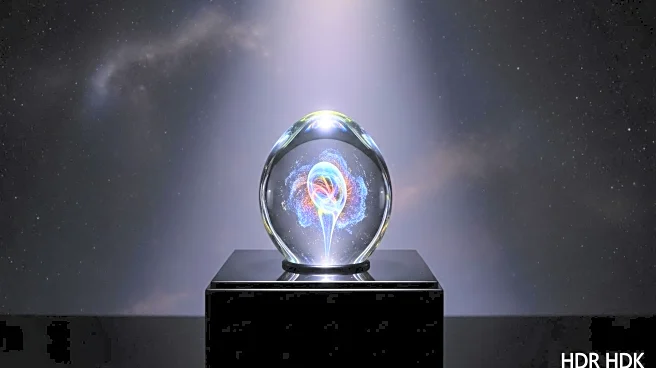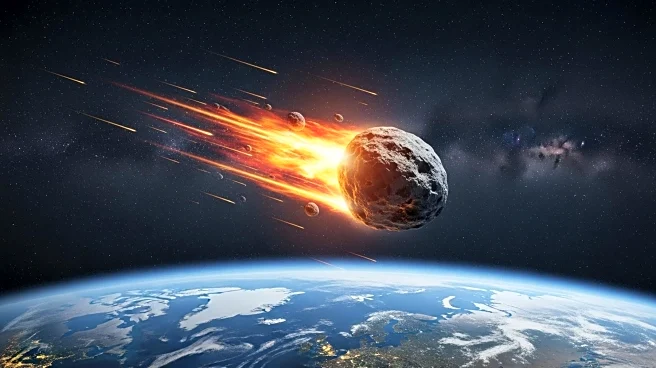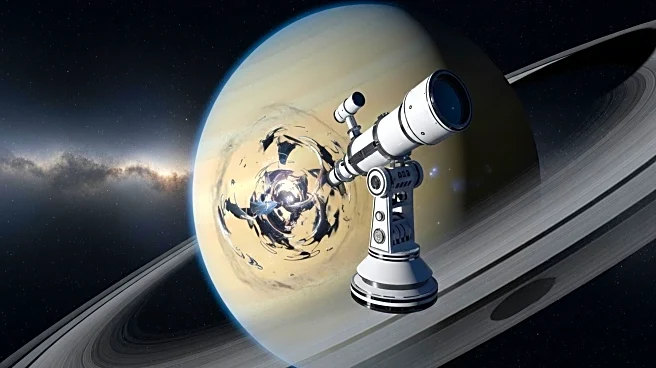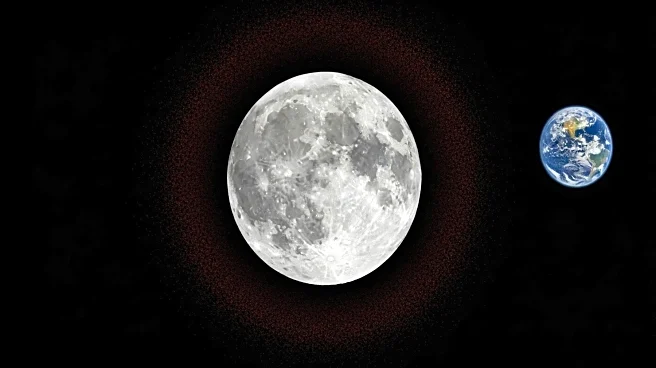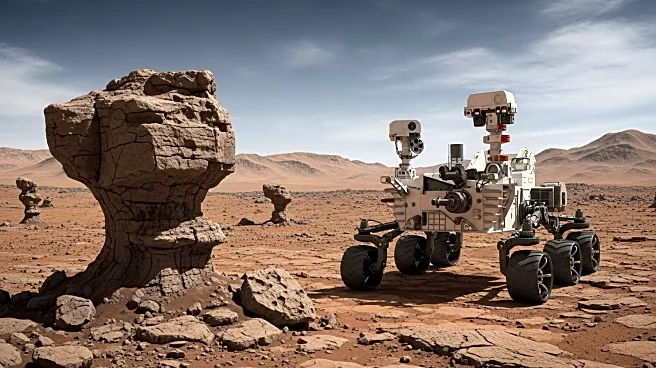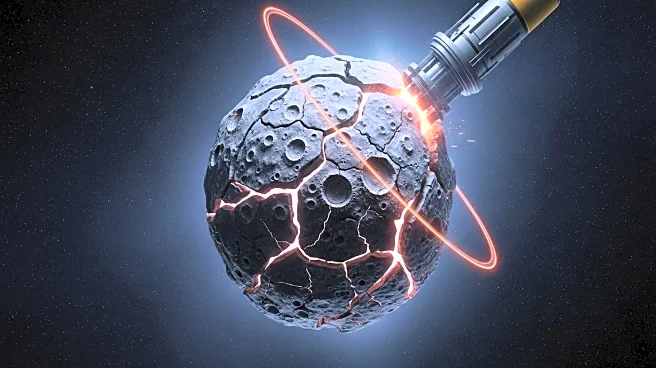What's Happening?
Researchers have confirmed that the Silverpit Crater, located in the North Sea, was formed by an asteroid impact over 40 million years ago. Discovered in 2002, the crater is 1.8 miles wide and lies 766 yards below the seafloor. Its circular shape and central peak suggested a cosmic impact, but alternative theories such as underground salt deposits or volcanic activity were considered due to lack of definitive evidence. A team led by Uisdean Nicholson from Heriot-Watt University used modern 3D seismic imaging and drill cuttings from a 1980s oil well to confirm the asteroid impact origin. The seismic data revealed impact features like a central uplift and shattered rock zones, while microscopic analyses of drill samples showed rare grains of quartz and feldspar with scars formed under extreme pressures, confirming the impact hypothesis.
Why It's Important?
The confirmation of Silverpit Crater as an asteroid impact site provides valuable insights into how such events have shaped Earth's geological history. Understanding the impact features and preservation of the crater can help scientists predict potential consequences of future asteroid collisions. The findings contribute to the limited knowledge of impact craters on Earth, where erosion and tectonic activity often erase traces over time. With fewer than 250 confirmed impact sites worldwide, Silverpit joins notable craters like Chicxulub in Mexico, linked to the extinction of dinosaurs, enhancing scientific understanding of planetary impacts.
What's Next?
The research team plans to continue studying the Silverpit Crater to gather more information on the specific event and its aftermath. The crater's preservation offers a unique opportunity to explore the chemical reactions and geological changes following the impact. Scientists may use this data to refine models predicting the effects of future asteroid impacts on Earth. The study also opens avenues for further exploration of other potential impact sites beneath the oceans, contributing to the global database of impact craters.
Beyond the Headlines
The confirmation of Silverpit Crater as an asteroid impact site highlights the importance of revisiting geological structures with advanced technology. The use of modern seismic imaging and drill sample analysis demonstrates how scientific advancements can resolve longstanding debates and enhance understanding of Earth's history. The study underscores the need for continued investment in geological research and technology to uncover hidden aspects of Earth's past and prepare for future cosmic events.


